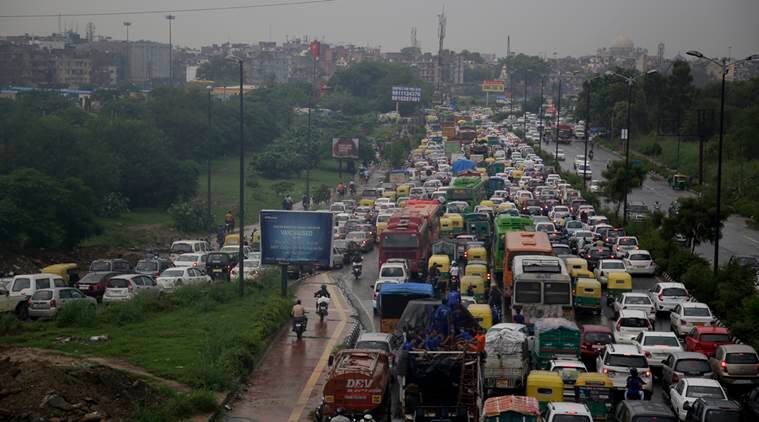
NEW DELHI: Commuting in Delhi can be a nightmare, especially when it rains. According to a global traffic index report released on February 10, by TomTom, commuters were forced to spend an additional 71 per cent of their commuting time caught in traffic jams on August, 2021, when the city had significant rainfall of 139 mm.
According to the survey, traffic congestion in Delhi peaks during the monsoon months, with September being the worst, with a 56 per cent longer average commute time than other months. According to a report released in August 2021, by the Public Works Department, Delhi’s roads are not prepared to handle more than 50 mm of rain per day.
It seems unlikely that the situation will improve very soon. To manage its 426.55 km of natural drainage lines and 3311.54 km of artificial stormwater drains, Delhi continues to use an antiquated drainage master plan from 1975. A decade after work on an improved drainage system began, it is still stuck.
According to an official who spoke on the condition of anonymity, the PWD is in the process of appointing a consultant who would examine the important basin areas to identify issue areas that will subsequently be addressed by authorities. However, the issue isn’t just about water logging and drainage. Experts say that unsustainable high vehicle density, poorly managed roadways, and widespread encroachment exacerbate the problem, which will only get worse once the pandemic limitations are gone.
According to the TomTom Traffic Index, which tracks 404 cities in 58 countries, Delhi is the world’s 11th most congested metropolis. According to Anuj Malhotra, a transportation expert and member of an expert panel on decongesting Delhi’s roadways, once life returns to normal and traffic surges, the city must swiftly execute pending transportation policies.
Experts say that in order to minimise congestion, Delhi should limit the use of private vehicles. Despite the fact that roadways remain constrained, demand for new vehicles and parking spaces continues to grow. According to government data, Delhi had 13.4 million registered automobiles as of January 31, 2022, which is higher than the combined number of registered vehicles in Mumbai, Chennai, and Kolkata. According to the local transportation department, 7.77 million of these are in use. In addition, the capital’s roadways are used by a large number of vehicles from the satellite cities of Noida, Gurgaon, Faridabad, and Ghaziabad on a daily basis.

